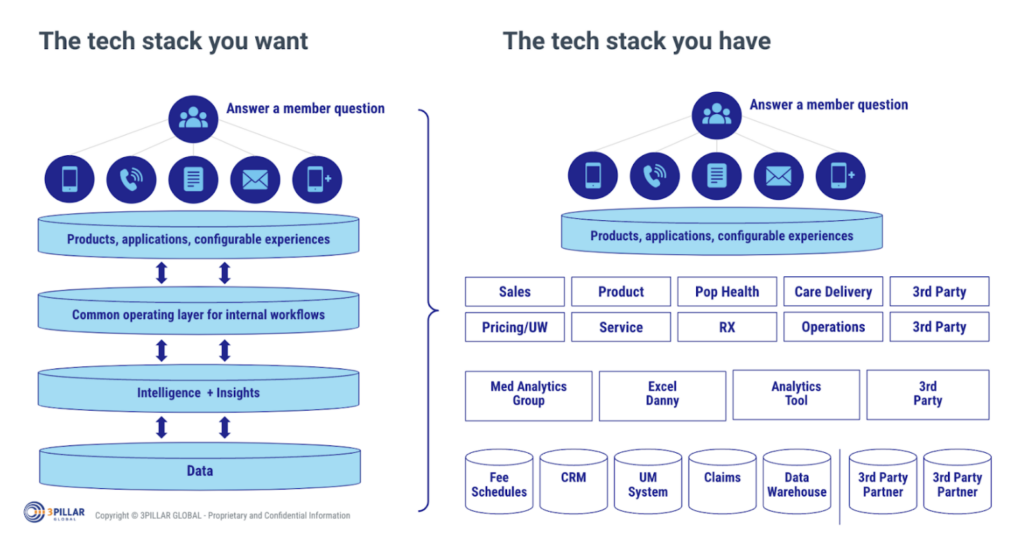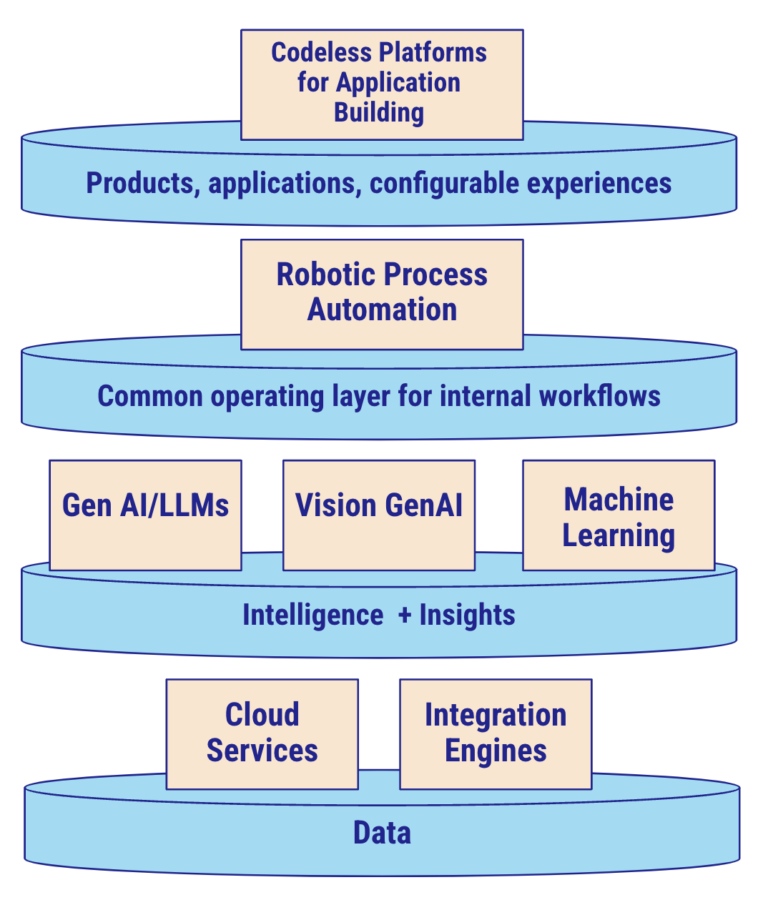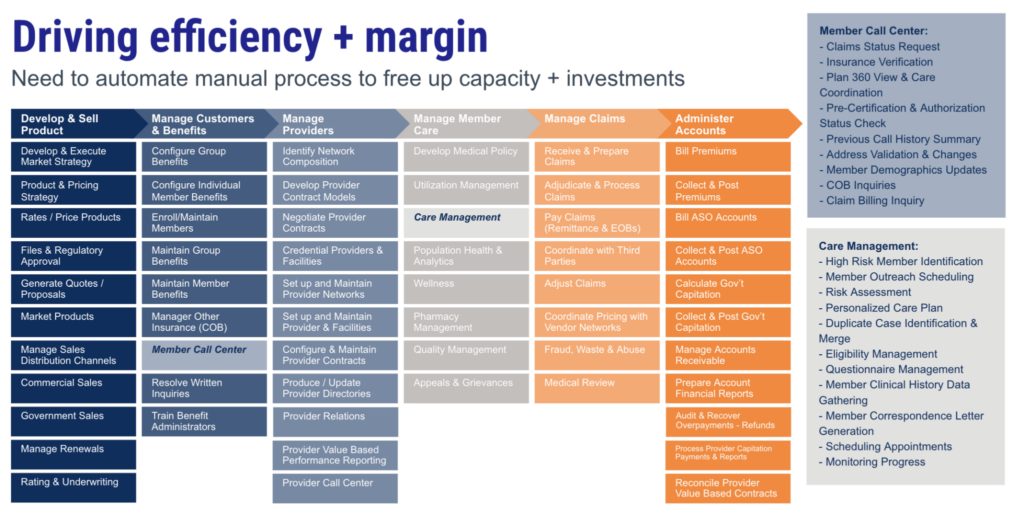
Healthcare Innovation Requires Deliberate Action, Not More Strategy
Over the past 15 years I’ve led strategy, product, and application development work with leaders across health systems, payers, and pharmaceutical manufacturers. I’ve launched new pharmacy businesses, built patient check-in flows, and planned how to revamp payer ASO offerings. My big takeaway: healthcare leaders already know what needs to be built.
They know what needs to change to make life better for patients and drive the business forward. They lead teams with absolute expertise in their areas. They know pharmacy, population health, value-based care, revenue cycle, etc.
Yet no one – including them! – is happy with the pace of innovation in healthcare. So what gives?
New ideas, legacy systems
Nearly every change in a healthcare process will now involve software. That’s just the world we live in.
Yet engineering talent was precious and expensive over the past 15 years. Start-ups and software focused companies held the edge recruiting that talent. As a result, healthcare systems employ a limited number of engineers. And saying these engineers are overstretched is an understatement. The backlog of tech debt, integration requests, and custom development requests would take years to get through if the requests stopped coming today.
The reality, however, is that the demands and requests are never going to stop coming; instead they are accelerating as healthcare organizations struggle to keep up with consumer expectations and shifting business models.

This has led to a tech stack that cannot support VPs as they try to implement their strategies. Some of the challenges I’ve seen again and again:
A – Overlapping and Ossified systems. I’ll never forget a colleague describing her time shadowing the client team at a national payer. There was no common operating system between all the different teams. So the poor call center representatives had to log into multiple teams’ systems to try to answer members’ queries.
These systems were built years ago and customized for a particular use case. They cannot accommodate new workflows, use cases, or definitions. Each team within the org uses their own operating systems. It’s difficult to build new workflows or customer experiences across them.
B – Disjointed data. Another payer example: a colleague wanted to create a smooth transition for members on commercial plans to Medicare Advantage plans. Make it seamless for them to stay with this payer rather than shopping on the market. Yet identifying the right commercial members and then moving their data from the commercial plan data warehouse to the CRM and then into the MA systems proved impossible.
At most healthcare organizations, not only is there no common data layer, but the data isn’t standardized. This is true of data within the healthcare org and with its software vendors.
C – Reliance on software vendors. VPs find the SaaS tool that best approximates the requirements they need and implement that solution. However, post-contract they don’t have control of the roadmap and additionally must retool workflows for the SaaS vendor rather than having software that matches their workflows.
All this has had a more pernicious impact, though. When the engineering team is able to focus on building new experiences, it’s often time-bound. The VPs I’ve worked with have one chance to build / upgrade the system. So rather than iterative design, you get waterfall approaches to requirements that result in a static product that may not deliver the expected value.
The tech paradigm is changing
I joined 3Pillar because the tech paradigm is changing. The agonizing “build or buy” decision of the past is giving way to new “buy to build” platforms. Tools that allow healthcare orgs to build their own solutions specific to the particular needs of the business are finally becoming readily available.

Some examples:
Codeless platforms for application building
Building a website a decade ago required a designer, a front-end engineer to build the website, and a back-end engineer for advanced functionality (like purchasing items off the website). Now you can use “drag and drop” services like Squarespace that don’t require you to write a line of code. Advanced capabilities like ecommerce are pre-built and can be added with a click if applicable.
To be clear, I’m not suggesting that mature healthcare companies use Squarespace as their CMS of choice. But what Squarespace has done for building lightweight websites—make it so easy a caveman can do it—is a trend that we’re now seeing used with healthcare technology. Healthcare organizations are building live applications using codeless platforms for application building like 3Pillar partner Unqork.
These cloud-based platforms reduce IT and DevOps overhead on the initial build and make it easier to iterate and maintain applications over time. A custom patient portal that would take 6 months to build now takes 3 sprints. See what Maimonides did with their patient portal using a codeless platform for application building. More importantly, business owners and their team can iterate on the application, trying various approaches and adjusting the solution based on effectiveness without major involvement from engineering.
Robotic Process Automation for internal workflows
There’s no shortage of manual processes at health systems and payers. This is true even within fairly rules-based, non-clinical processes like claims submissions or eligibility checks.
Robotic process automations tools like 3Pillar partner UiPath allow you to automate routine decisions (and flag items that require manual review). Importantly, these automation rules are configured by internal teams and live within your workflows – you don’t have to work within the confines of a pre-built SaaS company.

Gen AI, Vision AI, and ML for intelligence
GenAI is already being used extensively in health systems and payers today. Some of the top uses cases:
- Draft member communications for clinicians
- Extract and make sense of unstructured notes
- Auto-generation of documents
Generative AI is just one segment of AI, though. Vision AI (and its predecessor OCR) can be used to extract data from paper communications while machine learning algorithms are used to pull out insights and feed them into relevant workflows and applications.
These “off-the-shelf” tools expand the internal capacity of your engineering teams and allow VPs to build the experience and workflows they know they need. It allows your organization to roll out products customized to your needs and allow what differentiates your organization to shine.
Why I joined 3Pillar
Of course, you can’t just buy these tools, give them to VPs, and expect great results. We’ve seen that play out, and it never ends well. There are two critical prerequisites to ensure success:
Product mindset. Building great products requires more than just an engineer’s time. As these solutions allow engineers to do more, you need the same product rigor:
- Identifying the right use cases
- Interviewing users
- Mapping back-end processes
More importantly, it requires taking an iterative, agile approach to building products, testing what’s working and adapting.
Data engineering. Building great applications and extracting relevant insights depends on great underlying data. Building integrations between siloed data both within your organization and with third parties, standardizing the data to common definitions, and governing access are all key.
This is the work that 3Pillar has done with dozens of healthcare orgs over the past 15 years. From health insurance companies to provider orgs to labs, 3Pillar moves healthcare leaders from strategy to execution.
I’m excited for this moment and the opportunities ahead of us. The people working in healthcare know what needs to change and are eager to drive it forward. I’m proud to be on a team of talented engineers, PMs, and designers using the latest tools and technologies to unlock that change for our clients.
Interested in finding out more about how we’re helping healthcare organizations improve the patient experience and rethink their approach to technology? See some of our latest case studies and blog posts on our Healthcare page. And don’t hesitate to reach out to me via email at steve.rowe@3pillarglobal.com. I love nothing more than helping healthcare companies solve some of their most pressing challenges through innovative applications of technology.
About the author

Recent blog posts

Stay in Touch
Keep your competitive edge – subscribe to our newsletter for updates on emerging software engineering, data and AI, and cloud technology trends.



